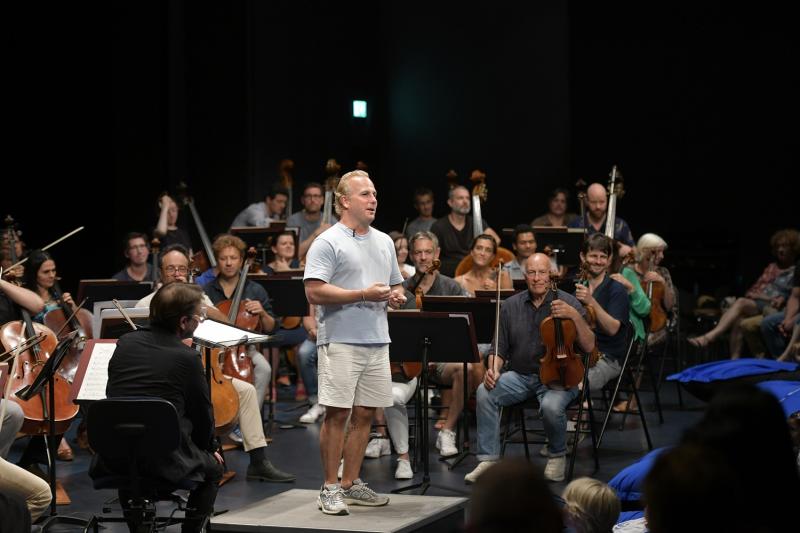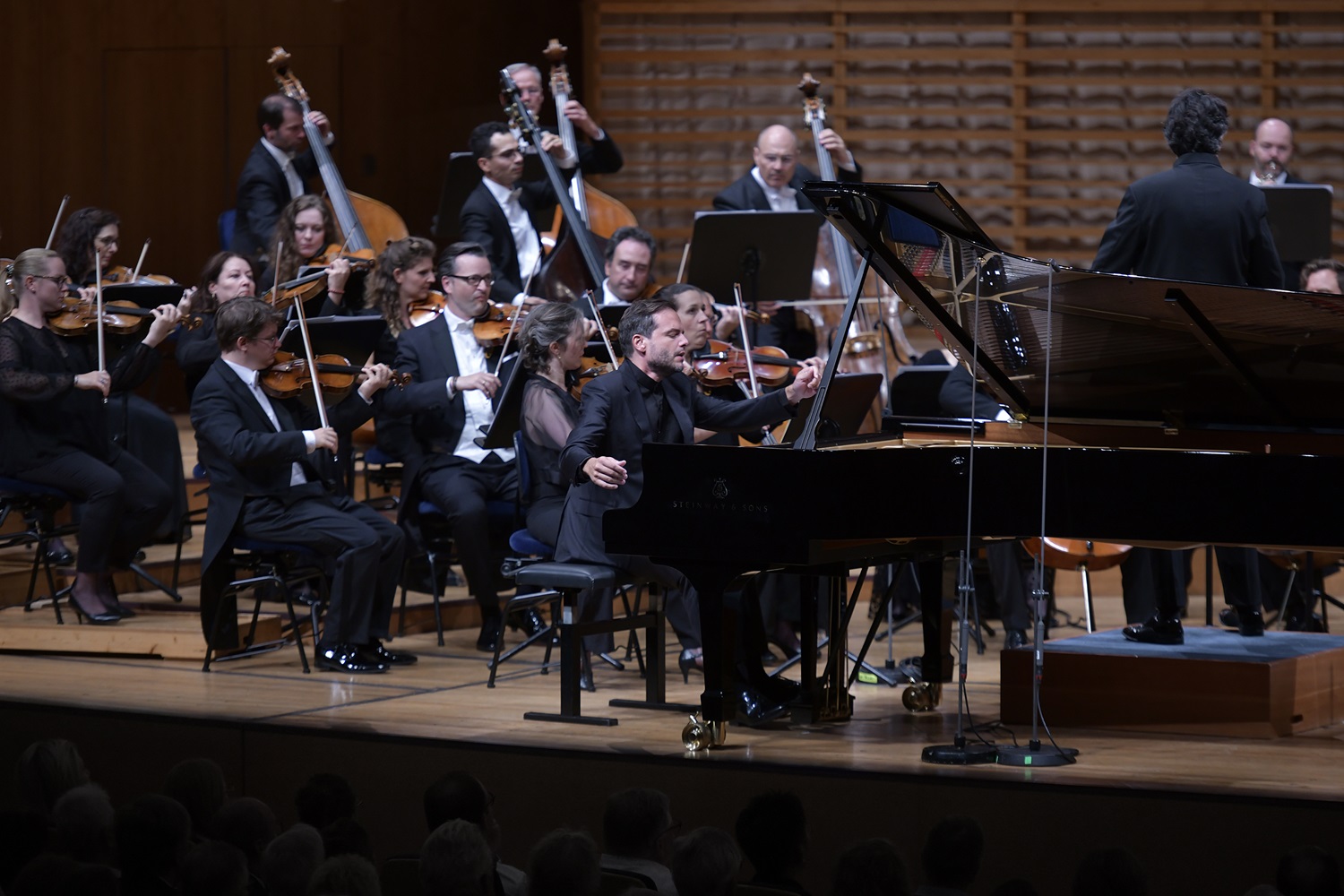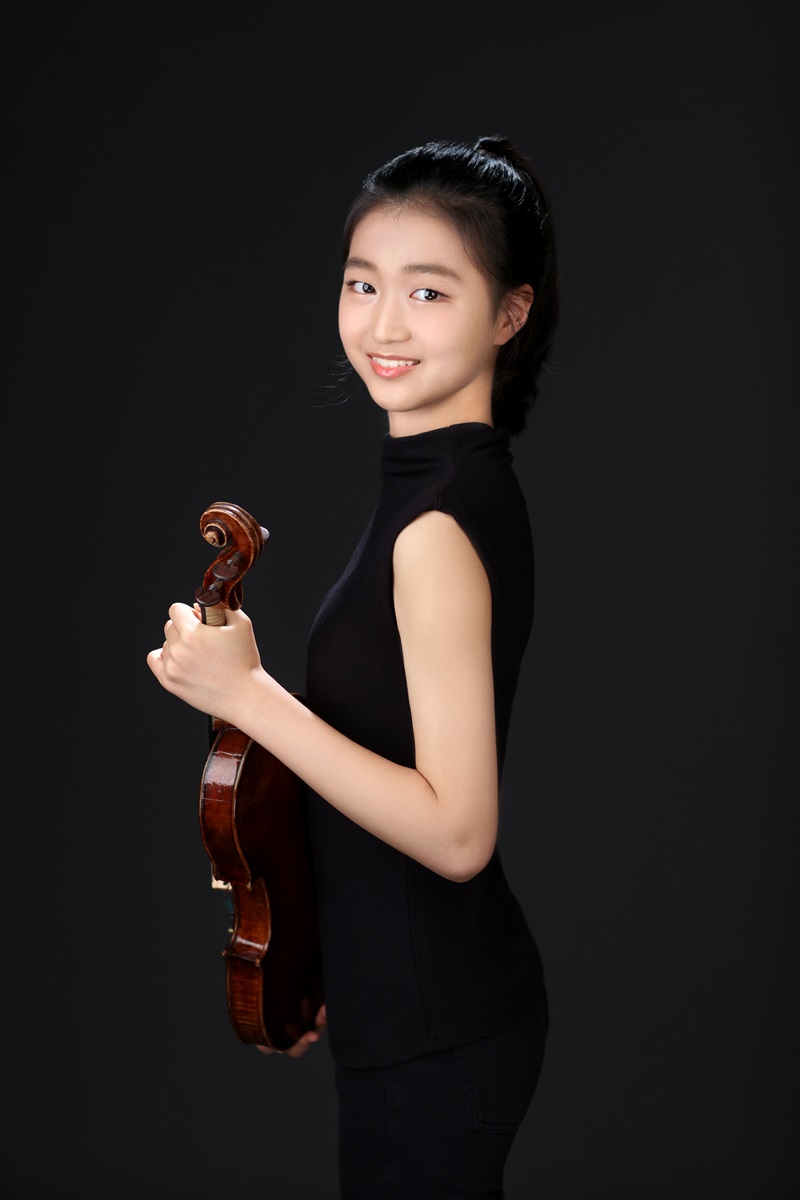theartsdesk in Switzerland: Lucerne and Gstaad offer curious audiences fresh perspectives on much-loved works | reviews, news & interviews
theartsdesk in Switzerland: Lucerne and Gstaad offer curious audiences fresh perspectives on much-loved works
theartsdesk in Switzerland: Lucerne and Gstaad offer curious audiences fresh perspectives on much-loved works
Two summer festivals find ever new ways to make each concert a memorable event

The summer festival circuit in Central Europe can be a bit of a merry-go-round. Notices in festival towns promise world-class orchestras and soloists, but they are usually the same performers, making festival appearances as part of broader touring schedules.
But a festival needs to be distinctive, it needs to be unique. Any hint of routine is fatal to its spirit of occasion. The setting usually helps, and the festivals in Lucerne and Gstaad both take place amid breathtaking scenery and in towns of real charm and character. Add to that a homegrown ensemble – typically a festival orchestra – and a theme to link each of the concerts, and the makings are in place for a summer programme with a clear identity – a real event.
First to Lucerne, where the festival theme this year is "curiosity". The guest list is as starry as any, with appearances from the Berlin and Vienna Philharmonics, Sheku Kanneh-Mason, Anna Vinitskaya, and many more. The city itself is exceptionally beautiful, with a well-preserved mediaeval centre, sitting aside one of Switzerland’s many crystalline lakes, the Alps looking serenely down in the distance. Just as significantly, it has a world-class concert hall, in the Culture and Congress Centre, itself sitting directly on the lake’s shores. The hall was completed in 1998, and its sound, shaped by acoustician Russell Johnson, is justly lauded in the festival’s literature. It is a large space, with a surprisingly high ceiling, but delivers welcome clarity and intimacy of sound.
One huge success story for the Lucerne Festival has been its festival orchestra. The orchestra was founded in 2003 by Claudio Abbado, who was able to attract the finest players from orchestras across Europe. Since his passing, many other leading conductors have worked with the ensemble, and today its Music Director is Riccardo Chailly. Everything is occasional with this orchestra – players and conductors change each season – one of the keys to its every performance feeling like a special event.
This year, Yannick Nézet-Séguin led the orchestra in Bruckner’s Seventh Symphony. A few days prior, the work was introduced to audiences in an early-evening event under the inquisitive rubric "Curious About Bruckner?", a nice tie-in to the festival theme. This proved to be an open rehearsal, but Yannick and the orchestra went to great lengths to welcome and inform the audience. Cushions for children were lined along the front of the orchestra, and several children also sat with the percussion section. This was a working rehearsal, but the conductor was amplified for the audience to hear, and the finale – the movement they were working on – was gradually pieced together through the rehearsal and then played in its entirety at the end. Yannick, in shorts and tee-shirt, was casual and chatty throughout, and the orchestra were on fine form, responding attentively to his every suggestion. For the audience, the process provided an insight into Yannick’s vision for the work: dynamic, yes, but with an intense and studied focus on key moments of transcendence.
It was easy feel a tinge of sympathy for the performers who followed. Giving the main concert of the evening was the Lucerne Symphony Orchestra, the city’s resident orchestra, a respected ensemble, but without the cache attached to their summer guests. But the concert proved as instructive as it was entertaining. Under principal conductor Michael Sanderling they gave Beethoven’s "Emperor" Concerto with Francesco Piemontesi followed by the Schubert Great C Major Symphony.  Piemontesi (pictured above, © Peter Fischli/Lucerne Festival) is a lyrical pianist who brings out the songful qualities in Beethoven’s music, always elegantly shaping the melodic lines, even though the most tortuous and dramatic passages. His even legato sometimes glosses over textural shifts, but effectively shapes the broad dynamic contours. The slow movement came off best, the dynamics now brought down to a whisper, but with everything still audible thanks to the fine acoustic. Conductor and orchestra were clearly on the pianist’s wavelength throughout, providing a warm, rich accompaniment, and equally lyrical for the woodwind solos.
Piemontesi (pictured above, © Peter Fischli/Lucerne Festival) is a lyrical pianist who brings out the songful qualities in Beethoven’s music, always elegantly shaping the melodic lines, even though the most tortuous and dramatic passages. His even legato sometimes glosses over textural shifts, but effectively shapes the broad dynamic contours. The slow movement came off best, the dynamics now brought down to a whisper, but with everything still audible thanks to the fine acoustic. Conductor and orchestra were clearly on the pianist’s wavelength throughout, providing a warm, rich accompaniment, and equally lyrical for the woodwind solos.
Sanderling’s vision for Schubert’s symphony was on a grand scale, very much in the Central European, mid-20th century tradition. A bold, lyrical tone again prevailed, but now with heavier articulation from the winds. Rhetorical gestures were often taken to extremes; the sudden caesura climax in the second movement was given the sort of dramatic weight you would expect in Shostakovich. For the most part, this proved effective, although his efforts to close the symphony on a similar scale were frustrated by Schubert’s stubbornly Classical cadential gestures.
Onwards – to Gstaad, a small town high in the Alps of the Berne Canton, where each year the Gstaad Menuhin Festival is held. As the name suggests, the event was founded by Yehudi Menuhin, initially a holiday maker here but latterly a festival promoter. Menuhin is fondly remembered in these parts, and the festival continues his legacy. A particularly personal connection will be added into the mix in two years’ time, when his prodigy Daniel Hope takes over the running.
From its earliest years, this was primarily a chamber music festival, with a small chapel in the centre of the town, and other modest venues, hosting violin recitals and similar events. But larger ensembles were gradually added, including a festival orchestra, similar to Lucerne’s, although mostly made up of Swiss players. Orchestral concerts are now staged in a festival tent. This is a sophisticated marquee, in which an impressively clean orchestral acoustic is achieved, thanks to a wooden shell that surrounds the stage, focussing the tone.
 My visit began with a performance very much in line with Menuhin’s original vision for the festival, a recital in the high street chapel by the violinist Seohyun Kim (pictured right). She was recently a winner in the Tibor Varga Competition and has an extraordinary technique of a player still in her mid-teens. She presented an ambitious and diverse programme, with pianist Marco Scilironi of Clara Schumann, Grieg, Ysaÿe and Tartini – all from memory! – which gave the impression of an already well-rounded musician with much to say in each of these works. Her interpretive approach in the Grieg Third Sonata sometimes felt a little too orderly and direct, but the folk dances had real impact and swing, especially the main theme of the finale. The Ysaÿe Second Sonata was a better fit. Each of the movements unfolded with carefully graded dynamic shading. And – whether through studied simplicity or genuine naivety – the plaintive textures of the bare second movement came across beautifully, without contrivance, and fully concealing its immense technical challenges.
My visit began with a performance very much in line with Menuhin’s original vision for the festival, a recital in the high street chapel by the violinist Seohyun Kim (pictured right). She was recently a winner in the Tibor Varga Competition and has an extraordinary technique of a player still in her mid-teens. She presented an ambitious and diverse programme, with pianist Marco Scilironi of Clara Schumann, Grieg, Ysaÿe and Tartini – all from memory! – which gave the impression of an already well-rounded musician with much to say in each of these works. Her interpretive approach in the Grieg Third Sonata sometimes felt a little too orderly and direct, but the folk dances had real impact and swing, especially the main theme of the finale. The Ysaÿe Second Sonata was a better fit. Each of the movements unfolded with carefully graded dynamic shading. And – whether through studied simplicity or genuine naivety – the plaintive textures of the bare second movement came across beautifully, without contrivance, and fully concealing its immense technical challenges.
The day concluded with a star appearance from high-profile visitors, the Budapest Festival Orchestra with Iván Fischer. The festival theme this year is ‘Transformation’, which was elegantly reflected in their concert ‘Folk Music in Symphony’. Folk-inspired Hungarian and Czech works, then, with those folk roots brought to the surface and classical civility taking a back seat. To set the mood, Liszt’s Hungarian Rhapsody No. 2, performed with cimbalom obbligato from Jenő Lisztes. For most of the piece, the cimbalom added a subtle haze around the string sound, but a brief duet with the leader, suddenly in gypsy fiddle mode, was particularly effective. And the Hungarian spirit of the orchestra was never in doubt, fuelled as much by the mariachi tone of the trumpets as by the cimbalom. And any suspicion of understatement from the soloist was effectively countered by a fiery bravura cadenza at the end.
Liszt’s Second Piano Concerto followed, with Alexandre Kantorow. The spirited Hungarian Rhapsody still rang in our ears, and everything in this performance was filled with the same spirit. Never before have the piano figurations sounded so cimbalom-like, and the folk-dance spirit was equally reflected in each of the wind solos. Kantorow himself delivered all this energy and passion, but without any overt theatrics or attention-seeking gestures. He takes it all in his stride, as if completely unfazed by Liszt’s astonishing technical demands.
Iván Fischer is a similar sort of conductor. His solid technique, knowledge of the music (from memory) and close connection to the players are always apparent, but his gestures are economical, and always to a clear interpretive end. Dvořák’s Seventh Symphony was given a similarly folk-infused reading, coherent and with a clear symphonic logic, but also with many surprising tempo decisions. The quiet coda to the first movement was reduced to a whisper and slowed down almost to stasis for the final bars. And the finale was febrile and erratic, a convulsive dance repeatedly breaking into new tempos and colours. For an encore, the orchestra regrouped as a choir, and sang a Dvořák part-song, another welcome surprise.
Fischer and his orchestra delivered a perfect festival performance – core repertoire, but presented in a completely different way: out of the ordinary, unconventional. Perhaps the secret lies in the fact that they, too, are a festival orchestra, an occasional group without fixed routine. They are presenting the same programme elsewhere, of course, but no matter. This felt like something special, something you could only get at a summer festival – a concert that was a real event.
- The Lucerne Festival runs until 15 September and the Gstaad Menuhin Festival until 31 August
- More classical music reviews on theartsdesk
Share this article
The future of Arts Journalism
You can stop theartsdesk.com closing!
We urgently need financing to survive. Our fundraising drive has thus far raised £49,000 but we need to reach £100,000 or we will be forced to close. Please contribute here: https://gofund.me/c3f6033d
And if you can forward this information to anyone who might assist, we’d be grateful.

Subscribe to theartsdesk.com
Thank you for continuing to read our work on theartsdesk.com. For unlimited access to every article in its entirety, including our archive of more than 15,000 pieces, we're asking for £5 per month or £40 per year. We feel it's a very good deal, and hope you do too.
To take a subscription now simply click here.
And if you're looking for that extra gift for a friend or family member, why not treat them to a theartsdesk.com gift subscription?
more Classical music
 Bizet in 150th anniversary year: rich and rare French offerings from Palazzetto Bru Zane
Specialists in French romantic music unveil a treasure trove both live and on disc
Bizet in 150th anniversary year: rich and rare French offerings from Palazzetto Bru Zane
Specialists in French romantic music unveil a treasure trove both live and on disc
 Scottish Chamber Orchestra, Ibragimova, Queen’s Hall, Edinburgh review - rarities, novelties and drumrolls
A pity the SCO didn't pick a better showcase for a shining guest artist
Scottish Chamber Orchestra, Ibragimova, Queen’s Hall, Edinburgh review - rarities, novelties and drumrolls
A pity the SCO didn't pick a better showcase for a shining guest artist
 Kilsby, Parkes, Sinfonia of London, Wilson, Barbican review - string things zing and sing in expert hands
British masterpieces for strings plus other-worldly tenor and horn - and a muscular rarity
Kilsby, Parkes, Sinfonia of London, Wilson, Barbican review - string things zing and sing in expert hands
British masterpieces for strings plus other-worldly tenor and horn - and a muscular rarity
 From Historical to Hip-Hop, Classically Black Music Festival, Kings Place review - a cluster of impressive stars for the future
From quasi-Mozartian elegance to the gritty humour of a kitchen inspection
From Historical to Hip-Hop, Classically Black Music Festival, Kings Place review - a cluster of impressive stars for the future
From quasi-Mozartian elegance to the gritty humour of a kitchen inspection
 Shibe, LSO, Adès, Barbican review - gaudy and glorious new music alongside serene Sibelius
Adès’s passion makes persuasive case for the music he loves, both new and old
Shibe, LSO, Adès, Barbican review - gaudy and glorious new music alongside serene Sibelius
Adès’s passion makes persuasive case for the music he loves, both new and old
 Anja Mittermüller, Richard Fu, Wigmore Hall review - a glorious hall debut
The Austrian mezzo shines - at the age of 22
Anja Mittermüller, Richard Fu, Wigmore Hall review - a glorious hall debut
The Austrian mezzo shines - at the age of 22
 First Person: clarinettist Oliver Pashley on the new horizons of The Hermes Experiment's latest album
Compositions by members of this unusual quartet feature for the first time
First Person: clarinettist Oliver Pashley on the new horizons of The Hermes Experiment's latest album
Compositions by members of this unusual quartet feature for the first time
 Gesualdo Passione, Les Arts Florissants, Amala Dior Company, Barbican review - inspired collaboration excavates the music's humanity
At times it was like watching an anarchic religious procession
Gesualdo Passione, Les Arts Florissants, Amala Dior Company, Barbican review - inspired collaboration excavates the music's humanity
At times it was like watching an anarchic religious procession
 Classical CDs: Camels, concrete and cabaret
An influential American composer's 90th birthday box, plus British piano concertos and a father-and-son duo
Classical CDs: Camels, concrete and cabaret
An influential American composer's 90th birthday box, plus British piano concertos and a father-and-son duo
 Cockerham, Manchester Camerata, Sheen, Martin Harris Centre, Manchester review - re-enacting the dawn of modernism
Two UK premieres added to three miniatures from a seminal event of January 1914
Cockerham, Manchester Camerata, Sheen, Martin Harris Centre, Manchester review - re-enacting the dawn of modernism
Two UK premieres added to three miniatures from a seminal event of January 1914
 Kempf, Brno Philharmonic, Davies, Bridgewater Hall, Manchester review - European tradition meets American jazz
Bouncing Czechs enjoy their Gershwin and Brubeck alongside Janáček and Dvořák
Kempf, Brno Philharmonic, Davies, Bridgewater Hall, Manchester review - European tradition meets American jazz
Bouncing Czechs enjoy their Gershwin and Brubeck alongside Janáček and Dvořák
 Solomon, OAE, Butt, QEH review - daft Biblical whitewashing with great choruses
Even a top soprano and mezzo can’t make this Handel paean wholly convincing
Solomon, OAE, Butt, QEH review - daft Biblical whitewashing with great choruses
Even a top soprano and mezzo can’t make this Handel paean wholly convincing

Add comment